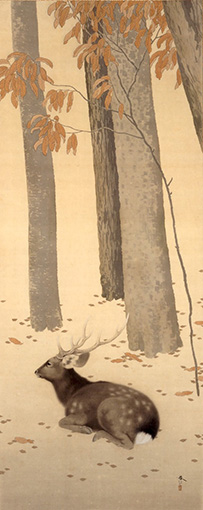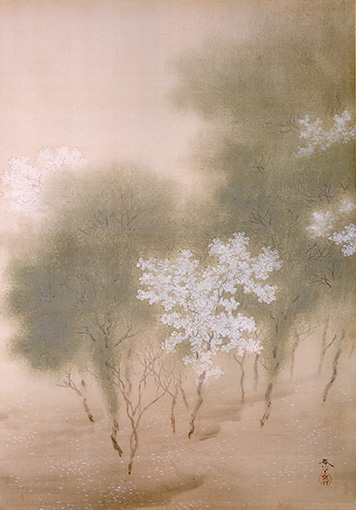
[Audio Guide]
As this deer reclines in an autumnal forest, we might wonder what it is thinking of, and what it is looking at. The manner in which the tree trunks and the leaves have been painted strengthen the deer’s sense of isolation. The careful rendering of the deer’s pelt makes it look as though one could reach out and touch it, though the painting is saturated with a sense of tension as if the deer is on its guard and would jump up and run if we did so. In the spring of 1908, Shunso’s eyesight deteriorated due to an illness and he was prevented from making art or consuming alcohol. He was able to fully resume his activities in December of that year. In 1909 he produced several masterpieces based on the forest scenery near to a retreat in the vicinity of Yoyogi, Tokyo. That includes this work, which takes that forest as a setting. The artist was cognizant of the surface and texture of the tree bark and also of the positioning and spatial relationships between the trees.

[Audio Guide]
This appears to be a wood in spring, enveloped by misty light and air. The trees are slender, their roots unclear, and the surface below could be seen as either sand or water. Amid the dim new greenery, white blossoms catch the eye. Petals are scattered on the ground, and the otherwise empty space appears otherworldly. At the time, Hishida Shunso was exploring the rendering of atmosphere and light rays by blurring contours with karabake (brushes used for shadings and tonal gradations). His approach was not appreciated, and was ridiculed as morotai (lit. “vague style”). However, it received unexpectedly high praise in Europe and the United States, which he toured for a year and a half starting in 1904. Spring is a work dating from around this period, at a turning point when Shunso was gaining confidence, identifying challenges, and making the so-called “vague” style fully his own.